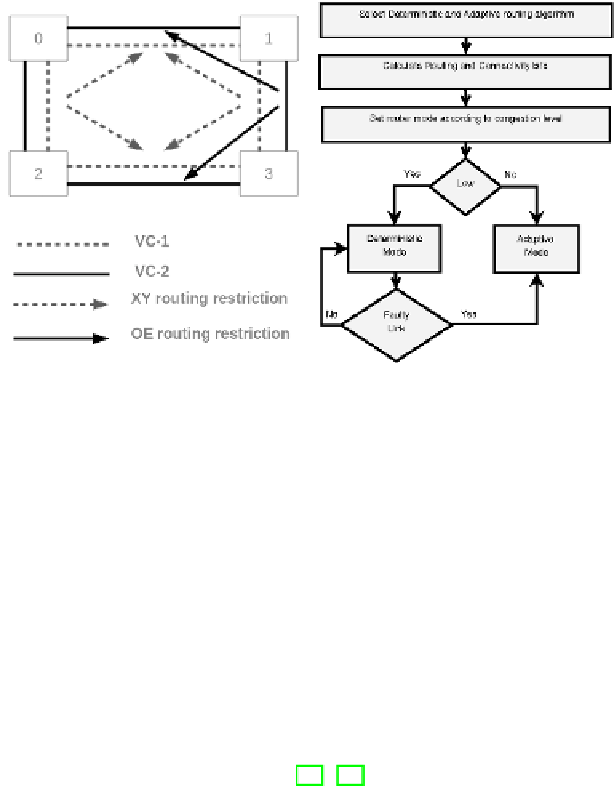Information Technology Reference
In-Depth Information
Fig. 2.
(a) Deadlock Avoidance
(b) Proposed Method
Finally, in wormhole switched networks, some transitions to the XY layer can still be
permitted not introducing deadlocks. This is the case when the routing restrictions of
XY and OE coincide. Figure 2.a shows the routing restrictions for XY(dotted) and for
OE (firm line). Notice that at switches 1 and 3, routing restrictions of XY and OE co-
incide and turns from X dimension to Y dimension are legal for both algorithms. Thus,
in these locations, the transition from OE to XY can be allowed with no deadlock risk.
Livelock situations are avoided by constraining packets to use only minimal path when
it is available and use of Time to Live (TTL) in case non-minimal path is used.
5
Experimental Setup
We have used NoC simulator NIRGAM [12] [13] for simulation. NIRGAM is a Sys-
temC based, discrete event cycle accurate simulator and provides an extensive envi-
ronment to experiment various parameters like topology type, size, routing algorithms,
buffer size and traffic pattern.
We have used XY for deterministic and Odd-Even for adaptive mode. Both XY and
Odd-Even routing is implemented with LBDR. As routing restrictions used for deadlock
freedom are different for deterministic and adaptive scheme, we used two sets of routing
bits, one for XY and other for Odd-Even. Single set of connectivity bits is used for both
schemes as topology is same for both schemes. All experiments are performed on a 2D
mesh topology of size 4
×
4 under bursty traffic.
5.1
Experiment-1
In this experiment, node 4 is chosen as source node producing bursty traffic and node
15 is chosen as destination node. Figure 3 shows the topology along with failed links.
Link failures are introduced one by one till the network survives. As there is currently a

